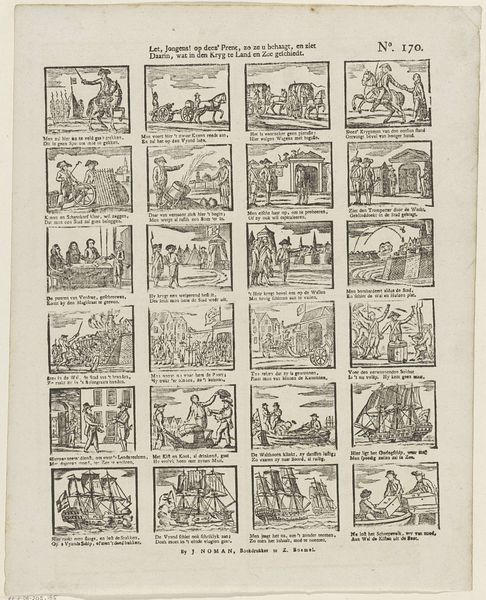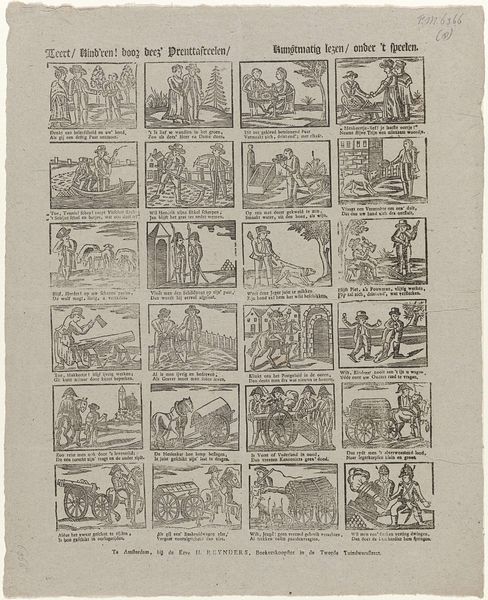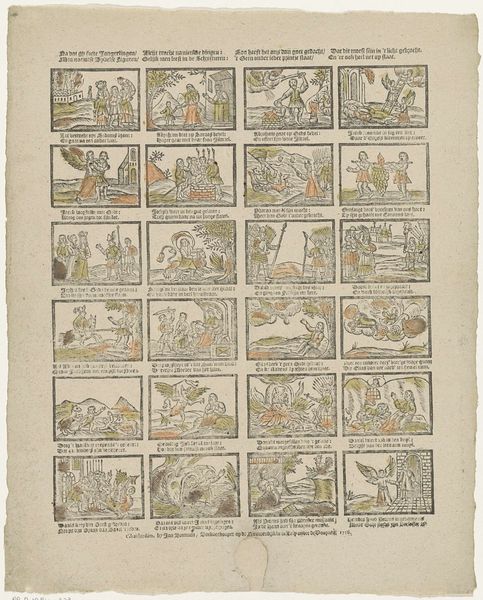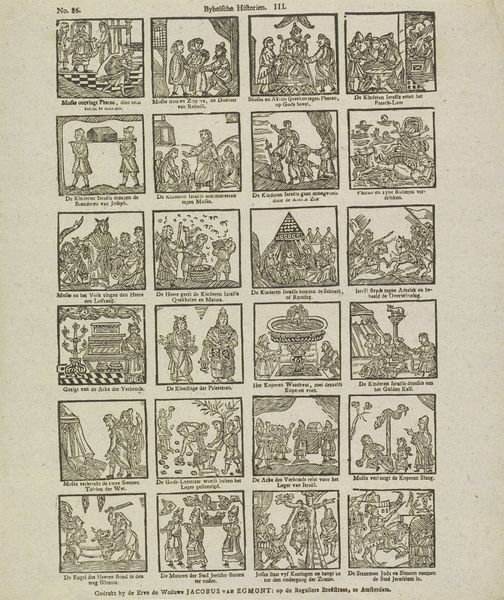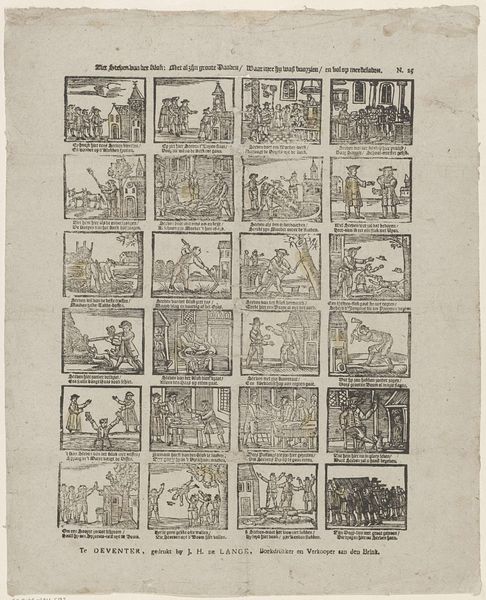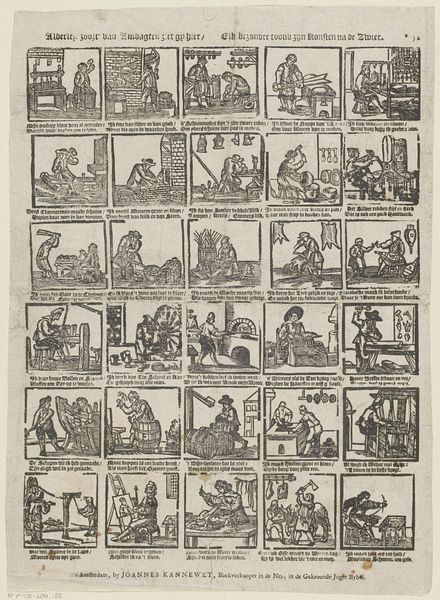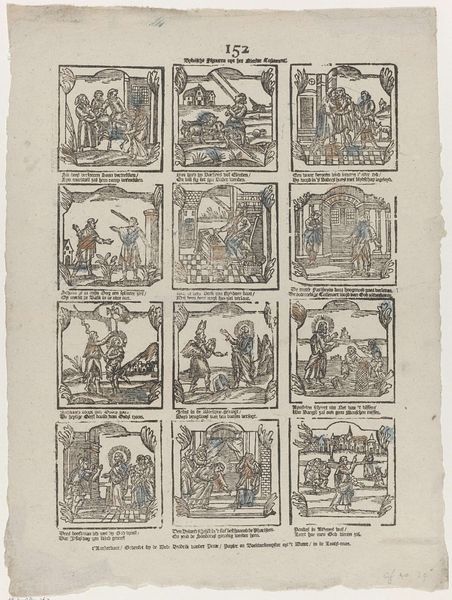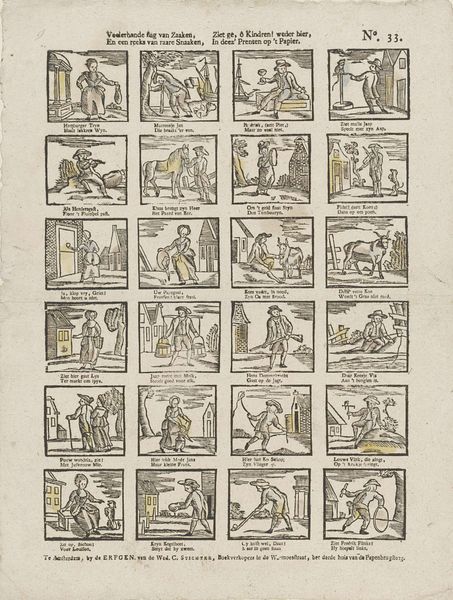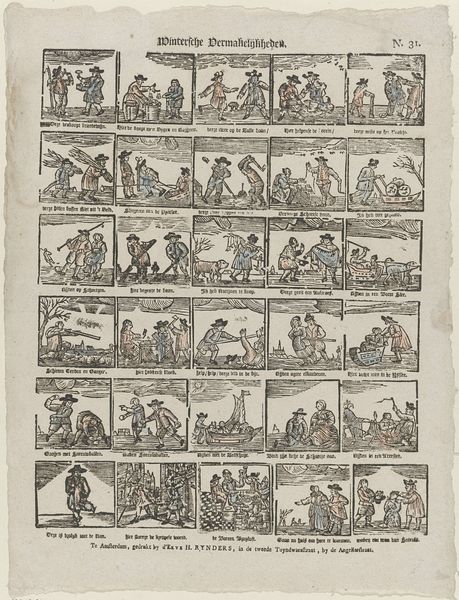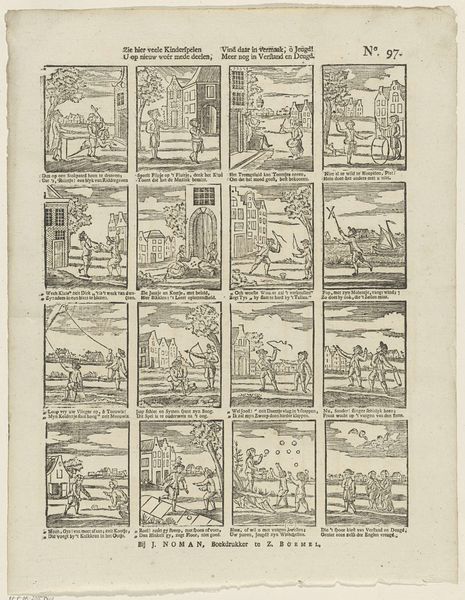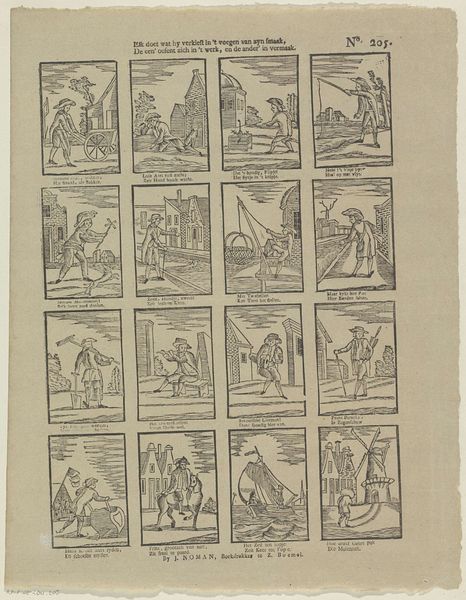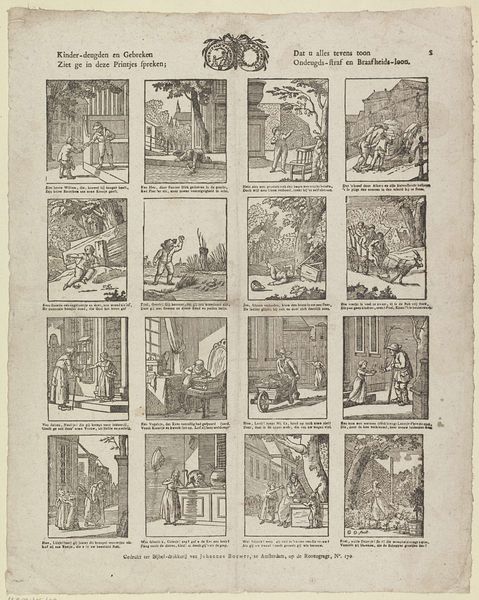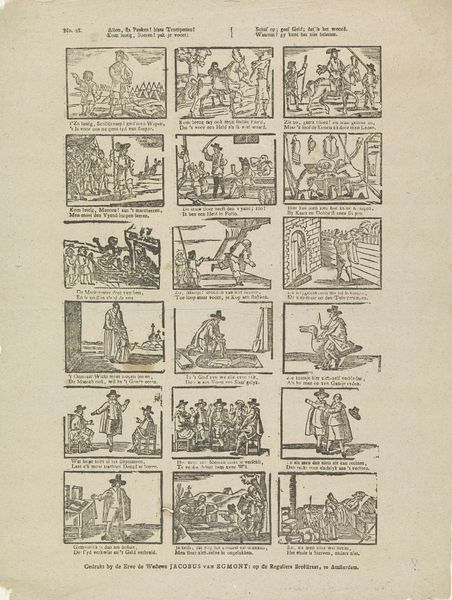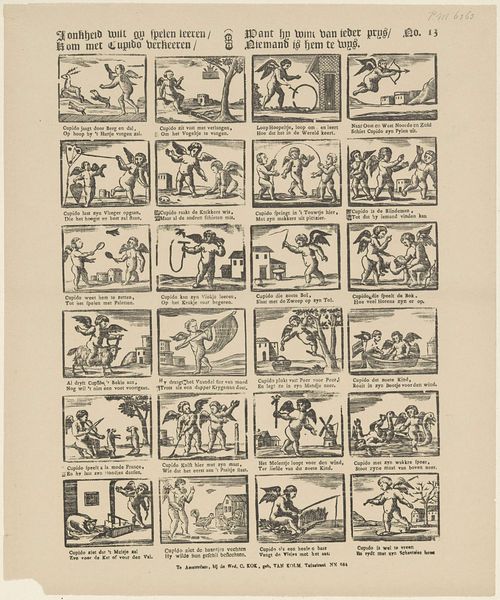
graphic-art, print, engraving
#
graphic-art
#
narrative-art
#
dutch-golden-age
# print
#
old engraving style
#
genre-painting
#
engraving
Dimensions: height 365 mm, width 275 mm
Copyright: Rijks Museum: Open Domain
Curator: Welcome. We’re standing before “De vermakelijkeyt van de jonge jeugd,” or “The Amusement of Young People.” This engraving, likely dating between 1767 and 1793, is from the collection of Erven Hendrik van der Putte and currently resides here at the Rijksmuseum. Editor: It's visually arresting— almost like a comic strip from another era, laid out in these ordered squares. It feels didactic, full of stories trying to instruct through images. There's a starkness, a grimness even, despite its supposed theme of amusement. Curator: Indeed. The artist uses these vignettes almost like proverbs in pictures. The scenes, rendered with fine lines characteristic of engraving, each carry their own small moral tale. This form echoed a popular tradition: conveying wisdom through readily digestible images. Each box shows some facet of young life, hinting at deeper meaning. Editor: The technique itself speaks volumes about the societal value placed on reproducibility. Engraving allows for identical images, which made these accessible for wider circulation. It connects the domestic craft tradition with the social pressure to enforce behaviors among the "jonge jeugd." Were these used in schools, perhaps? What paper types were used, how common or durable? Curator: Perhaps not explicitly for school use. Though it presents an overview of life, or perhaps conduct. Each panel has its specific lesson woven within it. It would probably sit on the wall to promote reflection about human conduct, as visual language to teach life lessons or virtues for conduct. The artist is trying to reveal aspects of culture that are perhaps not literally visible. Editor: This reminds us that art never exists in isolation. It exists alongside its socio-economic moment. And these repeated illustrations, meant for wide distribution, reveal aspirations—but, for whom? The images provide clues about society, class structure and consumption, inviting me to see how images shape ideas about youthful propriety, behavior. It's about what we choose to replicate. Curator: That's very well stated. Through visual encoding and careful storytelling, these modest prints created conversations within the families who might own them, speaking directly to core beliefs and expectations, both visible and invisible. Editor: Looking at it again through that lens changes things; it speaks of labor, domestic craft traditions, commerce, all intertwined, shaping what those "vermakelijkeyt" truly was for the era’s "jonge jeugd."
Comments
No comments
Be the first to comment and join the conversation on the ultimate creative platform.
